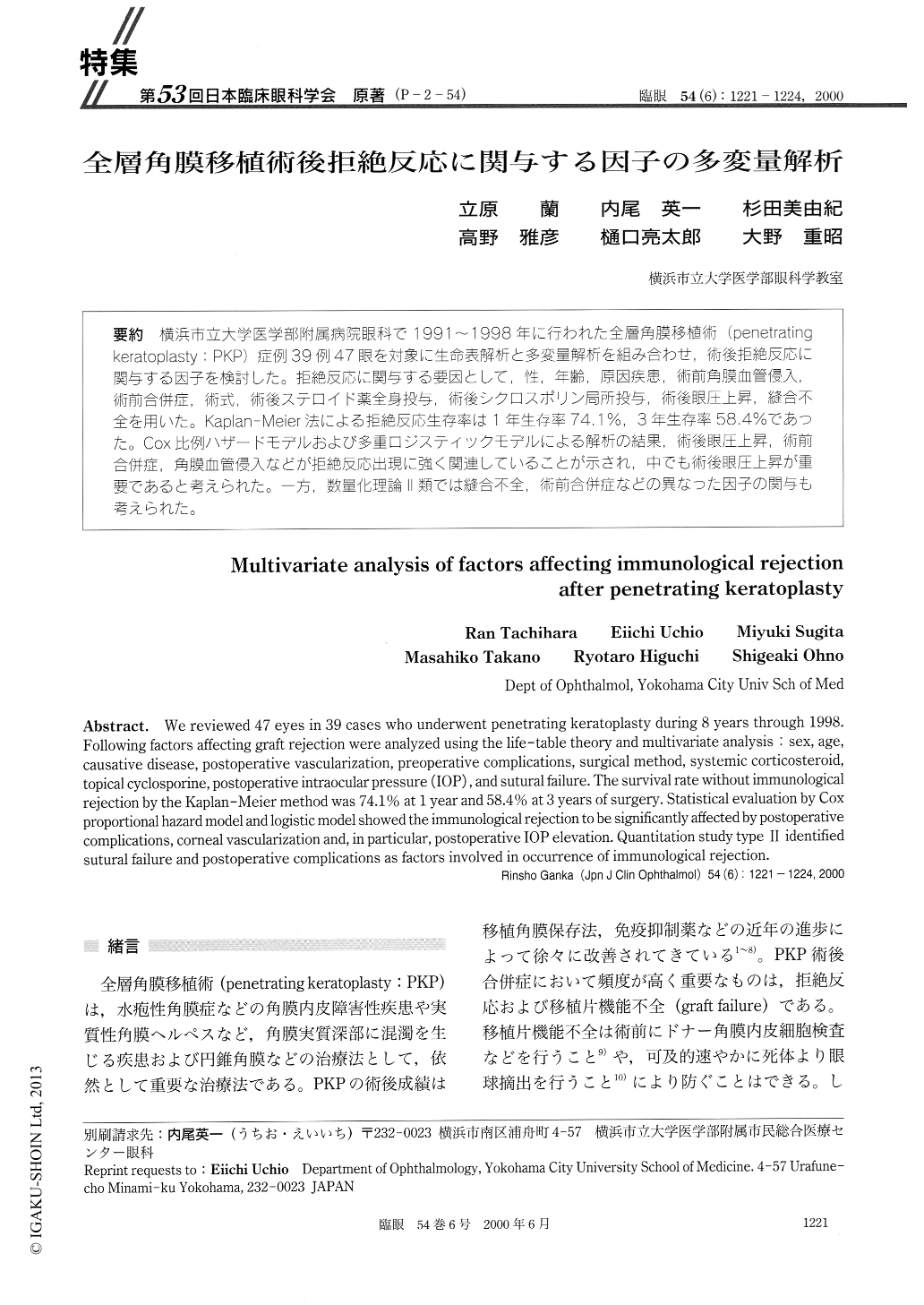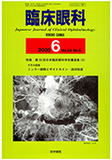Japanese
English
- 有料閲覧
- Abstract 文献概要
- 1ページ目 Look Inside
(P−2-54) 横浜市立大学医学部附属病院眼科で1991〜1998年に行われた全層角膜移植術(penetratingkeratoplasty:PKP)症例39例47眼を対象に生命表解析と多変量解析を組み合わせ,術後拒絶反応に関与する因子を検討した。拒絶反応に関与する要因として,性,年齢,原因疾患,術前角膜血管侵入,術前合併症,術式,術後ステロイド薬全身投与,術後シクロスポリン局所投与,術後眼圧上昇,縫合不全を用いた。Kaplan-Meier法による拒絶反応生存率は1年生存率74.1%,3年生存率58.4%であった。Cox比例ハザードモデルおよび多重ロジスティックモデルによる解析の結果,術後眼圧上昇,術前合併症,角膜血管侵入などが拒絶反応出現に強く関連していることが示され,中でも術後眼圧上昇が重要であると考えられた。一方,数量化理論II類では縫合不全,術前合併症などの異なった因子の関与も考えられた。
We reviewed 47 eyes in 39 cases who underwent penetrating keratoplasty during 8 years through 1998. Following factors affecting graft rejection were analyzed using the life-table theory and multivariate analysis : sex, age, causative disease, postoperative vascularization, preoperative complications, surgical method, systemic corticosteroid, topical cyclosporine, postoperative intraocular pressure (IOP) , and sutural failure. The survival rate without immunological rejection by the Kaplan-Meier method was 74.1% at 1 year and 58.4% at 3 years of surgery. Statistical evaluation by Cox proportional hazard model and logistic model showed the immunological rejection to be significantly affected by postoperative complications, corneal vascularization and, in particular, postoperative IOP elevation. Quantitation study type II identified sutural failure and postoperative complications as factors involved in occurrence of immunological rejection.

Copyright © 2000, Igaku-Shoin Ltd. All rights reserved.


